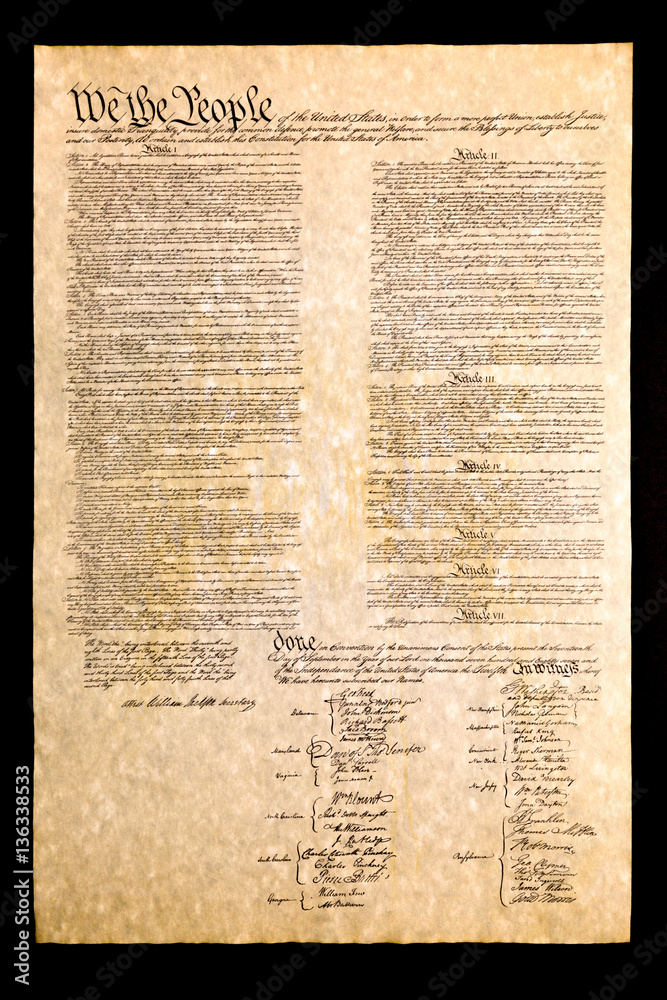A primary source was created or recorded during the time it occurred, or created/recorded by someone who was present during the experience or time period. Examples can include:

Constitution of the United States by Photography with Jack is licensed under CC BY-NC-SA 2.0.
Secondary sources are one or more sources removed from the actual event; they offer an analysis of primary sources, or attempt to explain or describe those primary sources. Examples can include:
Unlike the Constitution pictured on the left, a book ABOUT the constitution is a secondary source.